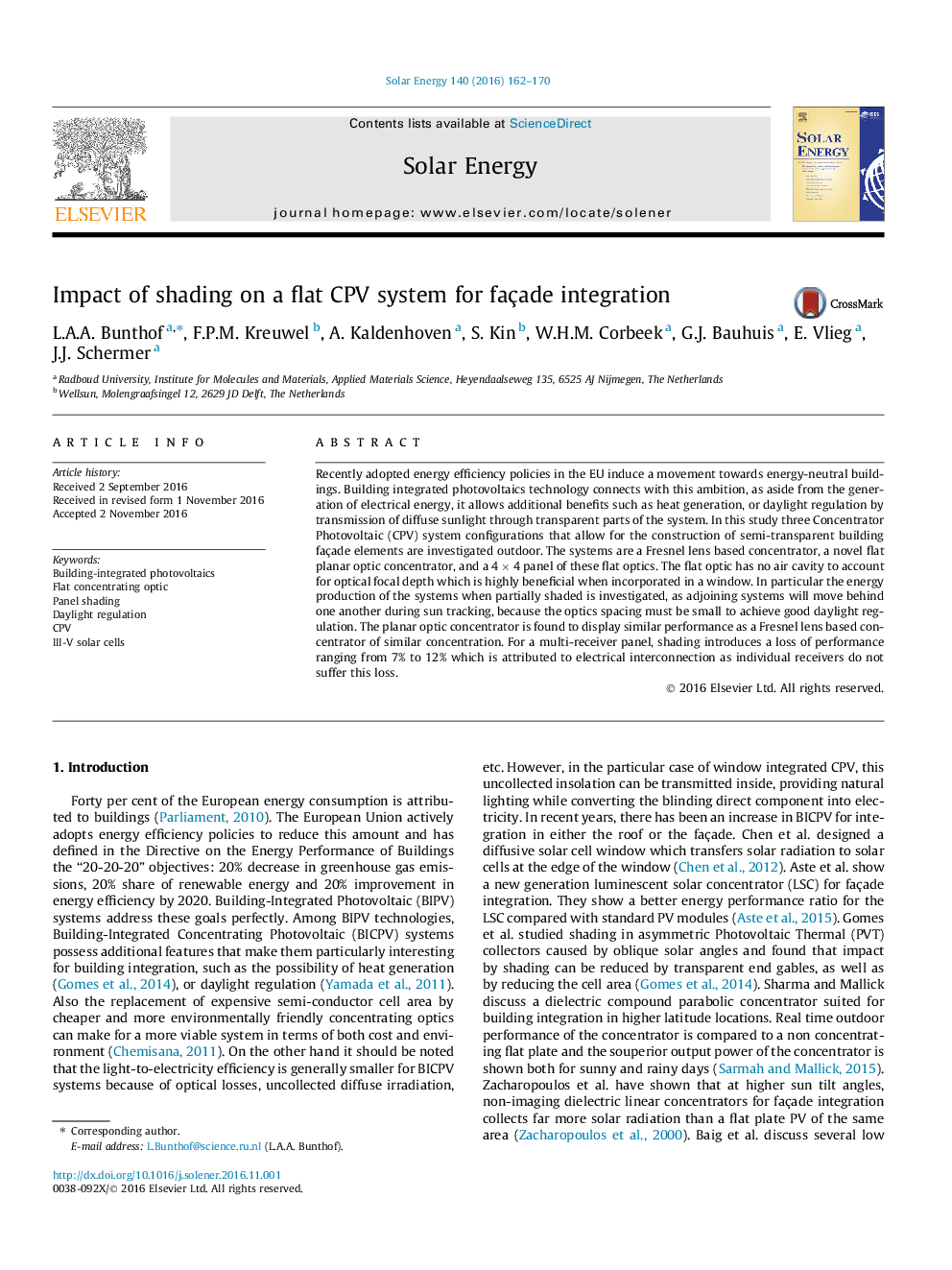| Article ID | Journal | Published Year | Pages | File Type |
|---|---|---|---|---|
| 5451030 | Solar Energy | 2016 | 9 Pages |
Abstract
Recently adopted energy efficiency policies in the EU induce a movement towards energy-neutral buildings. Building integrated photovoltaics technology connects with this ambition, as aside from the generation of electrical energy, it allows additional benefits such as heat generation, or daylight regulation by transmission of diffuse sunlight through transparent parts of the system. In this study three Concentrator Photovoltaic (CPV) system configurations that allow for the construction of semi-transparent building façade elements are investigated outdoor. The systems are a Fresnel lens based concentrator, a novel flat planar optic concentrator, and a 4Â ÃÂ 4 panel of these flat optics. The flat optic has no air cavity to account for optical focal depth which is highly beneficial when incorporated in a window. In particular the energy production of the systems when partially shaded is investigated, as adjoining systems will move behind one another during sun tracking, because the optics spacing must be small to achieve good daylight regulation. The planar optic concentrator is found to display similar performance as a Fresnel lens based concentrator of similar concentration. For a multi-receiver panel, shading introduces a loss of performance ranging from 7% to 12% which is attributed to electrical interconnection as individual receivers do not suffer this loss.
Keywords
Related Topics
Physical Sciences and Engineering
Energy
Renewable Energy, Sustainability and the Environment
Authors
L.A.A. Bunthof, F.P.M. Kreuwel, A. Kaldenhoven, S. Kin, W.H.M. Corbeek, G.J. Bauhuis, E. Vlieg, J.J. Schermer,
